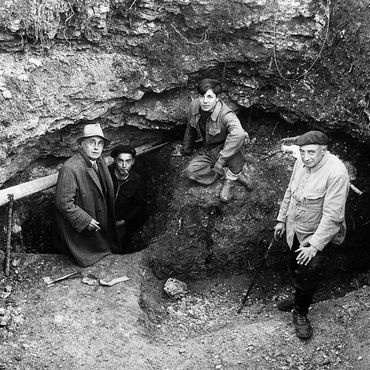
- Home
- History
- The discovery
Late summer, 1940. All eyes were fixed on the dramatic events that were unfolding. And yet, an archaeological discovery in Dordogne would, for a brief moment, attract the world's attention.
Halfway up the hill that rises above the town of Montignac was a foxes' den, the possible entrance to an underground passageway that, according to local legend, led to the Lascaux manor. A young apprentice mechanic named Marcel Ravidat made the first attempt to explore this opening, but had to put off the attempt for lack of the appropriate tools. Four days later, on 12 September, he returned with three other boys from the village, Jacques Marsal, Georges Agnel and Simon Coencas. They enlarged the hole and Marcel slipped down into a small vertical shaft. He landed on a cone of scree and slid all the way to the bottom. His three friends joined him. By the light of a hastily constructed lamp, they walked along a gallery some thirty metres long. As the passageway narrowed, they spied the first paintings in what is now known as the Axial Gallery. They explored every part of the cave, whose walls were covered in a fabulous bestiary, finally coming to halt before a black hole that led downwards to other parts of the cave. The next day they returned with a rope, which they uncoiled into the hole in the floor. Marcel was the first to lower himself down the eight-metre-deep shaft. There, at the base, he discovered the scene of the man confronting the bison.
The boys told their teacher, Léon Laval, who in turn went down into the cave on 18 September. Henri Breuil, who had taken refuge in the region, was informed of the discovery. He viewed the site for the first time two days after Laval.


